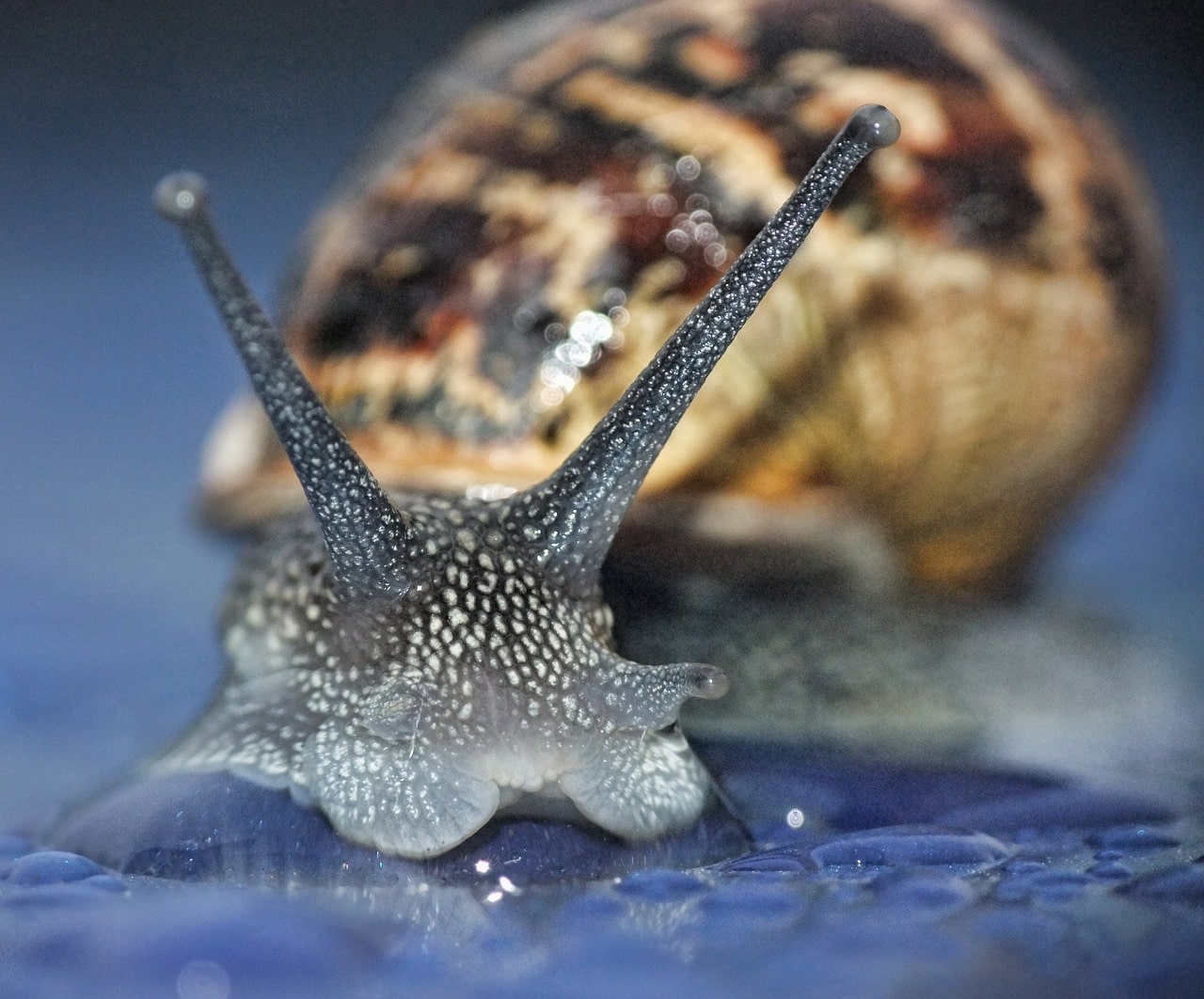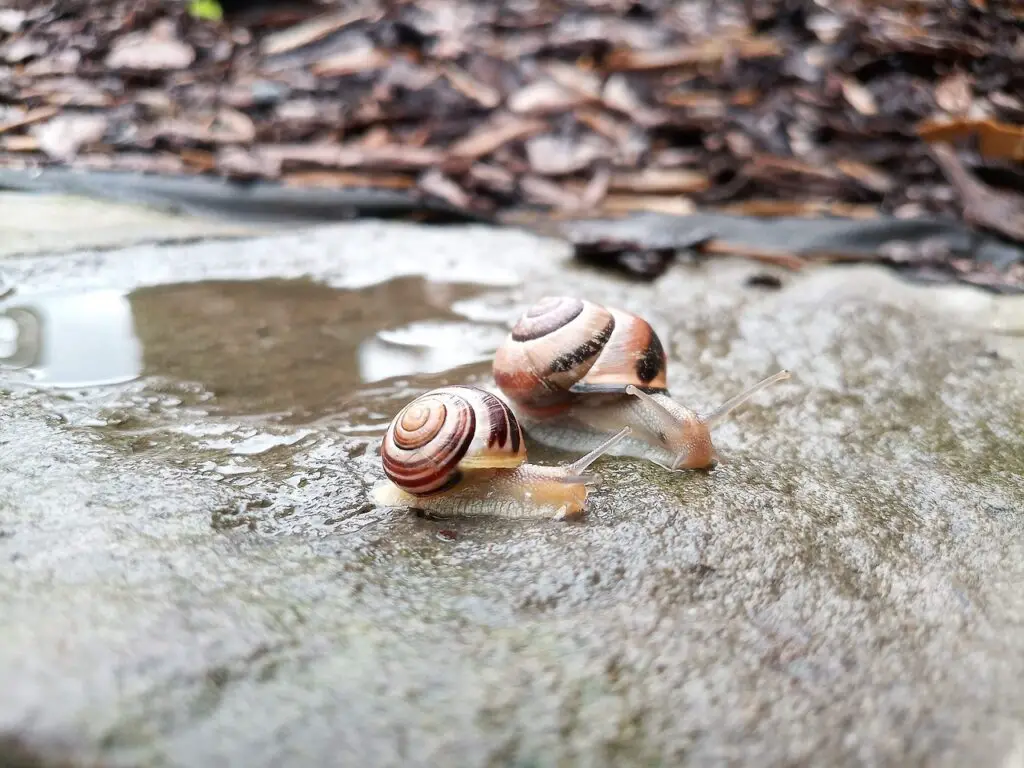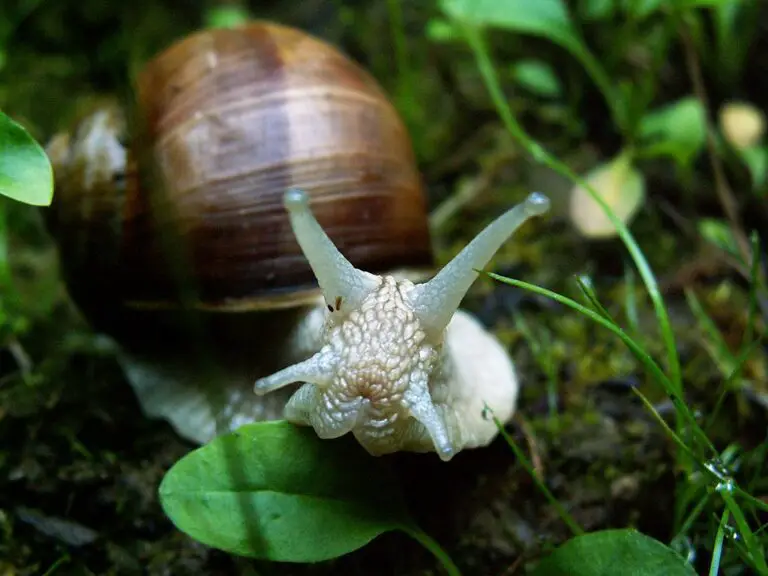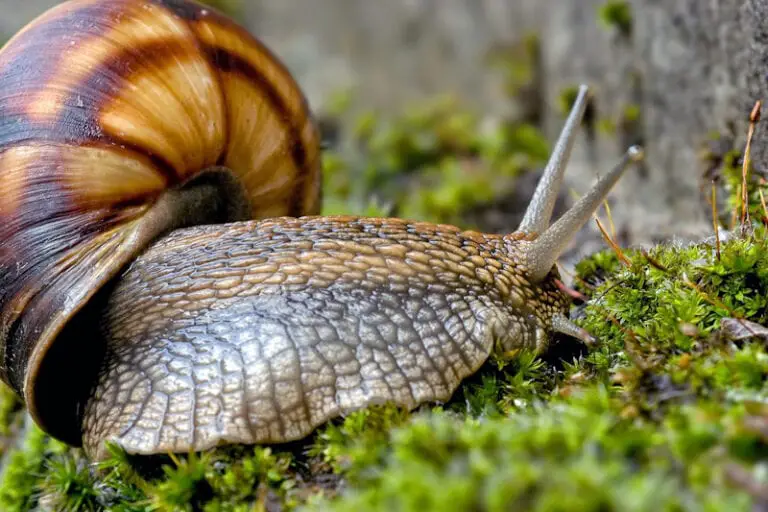Thinking in Slow Motion: Do Snails Have Brains?

If you’ve ever spent time watching snails, you might wonder what’s going on in their tiny heads. Do they have brains? How do they process the world around them? While they are commonly associated with their slow pace and slimy bodies, there is much more to these mollusks than meets the eye.
Exploring these questions can give us a unique insight into snail behavior and their ways of interacting with their environment. In this post, we’ll take a closer look at the snails’ neurological structure, their sensory abilities, and some of the interesting behaviors they display. Ready to learn more about what’s happening beneath the shell of a snail? Let’s dive in.
Understanding Snail Cognitive Abilities
Snails are often considered slow-moving and dull creatures, but they actually possess a variety of cognitive abilities that allow them to perceive and interact with their surroundings in remarkable ways.
Do Snails Think?
While snails don’t have a traditional brain like humans or other mammals, they do have a collection of ganglia or nerve cells that form a simple nervous system. These ganglia allow snails to process information, make decisions, and even exhibit some basic learning and memory abilities.
Researchers have studied the behavior of snails in response to different stimuli, such as light and food, and found that they can learn to associate certain cues with rewards or punishment. For example, snails have been trained to move towards a light source or avoid an unpleasant smell.

How Do Snails Sense the World?
Snails have a range of sensory organs that allow them to sense their environment. They have two pairs of tentacles – one pair is used for vision and the other for olfaction (smelling). The eyes of snails are located at the tips of the longer tentacles and are capable of both detecting light and forming images.
In addition to their tentacles, snails also have sensory cells located on their skin that can detect temperature, humidity, and even chemicals. These cells help snails navigate their environment and locate food and potential mates.
Are Snails Smart?
While snails may not be as intelligent as mammals or birds, they have remarkable abilities that allow them to survive and thrive in a variety of environments. Snails are adept at finding food, shelter, and breeding partners, and they can adapt to changes in their environment to ensure their survival.
Snails have also been used as model organisms in research on learning and memory. Scientists have found that studying the simple nervous system of snails can provide insights into how more complex neural networks function. So, while snails may not be the smartest animals in the animal kingdom, they still have much to teach us about the workings of the brain.
Inside the Snail’s Mind
Snails possess a complex set of behaviors and instincts that allow them to navigate their environment with surprising sophistication.
One of their most notable characteristics is their homing ability, which enables them to find their way back to their original location even after being moved some distance away. This remarkable talent is believed to be related to their sense of smell, which allows them to pick up on the unique scent of their home location.
In addition to their homing skills, snails also rely on their sense of touch to navigate their environment. Their slimy trail helps them find their way and avoid obstacles.
While snails may not possess the same cognitive abilities as more complex creatures, their behaviors and instincts have evolved over time to allow them to thrive in their unique environment.
“Key Behaviors and Survival Mechanisms of Snails”
| Behavior | Description |
|---|---|
| Estivation | Snails seal themselves into their shells to survive long periods of drought or hot weather. |
| Hibernation | During the colder months, snails can reduce their metabolic activity and enter a dormant state to conserve energy. |
| Reproduction | Snails are hermaphrodites, meaning they possess both male and female reproductive organs. They reproduce by exchanging sperm with another snail. |
Snail Eyes and Sight
Have you ever wondered how snails see the world around them? Despite their small size, snails have eyes that are capable of processing visual information. However, their vision is not as clear or detailed as human vision.
Snails have two pairs of tentacles on their heads, with the upper pair being used for vision. These tentacles have eyes at the tip, which are capable of sensing light and detecting shadows and movement. The lower pair of tentacles are used for sensing touch and smell.
While snails are able to perceive light and movement with their visual tentacles, their eyesight is relatively simple. They can only distinguish between light and dark, and some basic shapes and colors. This limited vision is due to the fact that their eyes are unable to form clear images, but rather detect light intensity and direction.

Interestingly, research suggests that snails may also have the ability to sense polarization of light. This means that they can perceive the orientation of light waves, providing them with important information about their surroundings such as the location of the sun, which helps them find shelter and avoid predators.
Overall, while snails may not have the same visual capabilities as humans or other animals, their eyes are adapted to their unique needs and allow them to navigate their environment effectively.
The Art of Snail Movement: A Slow Dance with Nature
Despite their reputation for being slow-moving creatures, snails are actually quite fascinating in their ability to navigate their environment. Snails move through a unique mechanism called a “foot,” which is a muscular organ located on the underside of their bodies. This foot extends and contracts to achieve a wave-like motion, propelling the snail forward. Mucous secretions from the foot help them adhere to surfaces, prevent falling off, and even provide protection from predators, as it makes it difficult for them to be pulled off of surfaces by force.
What’s even more intriguing is that snails also have the ability to move in reverse by changing the direction of their foot’s wave-like motion. This enables them to quickly retreat to their protective shell when faced with danger, a testament to their surprising agility and adaptability.
Snails are not limited to moving solely on the ground. Certain aquatic snails showcase an impressive capability of swimming by using their foot muscles to create a rhythmic wave motion, similar to the way they move on land. This allows them to traverse through water with relative ease, further illustrating the complex artistry in their seemingly simple movement.
By understanding the art of snail movement, we get a glimpse into how these small yet resilient creatures have adapted to survive and thrive in a multitude of environments, each one more challenging than the last. Their unique locomotion, while not as quick as most animals, truly encapsulates the notion that it’s not always about speed, but about endurance and adaptation.
Snails and their Brains: The Science Behind It
There is an ongoing debate about whether snails have brains or not. But what does science say?
Research has shown that snails do, in fact, have a rudimentary brain and nervous system. This brain is made up of a collection of neurons, or nerve cells, that allow for basic sensory processing and motor function.
| Brain Area | Function |
|---|---|
| Cerebral Ganglia | Controls feeding and movement |
| Visceral Ganglia | Controls organ functions |
The cerebral ganglia, also known as the cerebral ganglion, is the most prominent part of the snail’s brain. It is responsible for controlling feeding and movement, including the contraction of muscles that allow the snail to crawl.
The visceral ganglia, also known as the visceral mass, controls the functions of the snail’s organs, such as the digestive and reproductive systems.
Although the snail brain is much simpler than the human brain, it allows snails to carry out basic cognitive functions, such as learning, memory, and decision-making. For example, snails have been shown to learn and remember the location of food sources and to make choices based on environmental cues.
In addition to their rudimentary brain, snails also have a network of nerve cells throughout their bodies called the “peripheral nervous system.” These cells communicate with the brain and allow snails to sense their environment through touch, taste, smell, and light.
So, while snails may not have a complex brain like humans, they do have a nervous system that allows them to sense and interact with their surroundings in interesting ways.

Debunking Common Misconceptions
When it comes to snails, there are plenty of misconceptions floating around. One of the most common is the idea that snails don’t have brains. However, this couldn’t be further from the truth. All snails, from the tiniest to the largest, have brains that allow them to sense their environment and navigate the world around them.
So where does this myth come from? It likely stems from the fact that snails have a relatively simple nervous system compared to other animals with more complex brains. However, this does not mean that they lack a brain altogether.
In fact, snails’ brains are actually quite remarkable considering their small size. Their brains are able to process information from their senses, allowing them to make decisions about how to move and where to go. They are also responsible for controlling the snails’ muscles, including those used for movement and feeding.
It’s also worth noting that different types of snails may have different brain structures, depending on their individual needs and behaviors. For example, some snails may have a larger brain relative to their body size if they require more complex cognitive abilities.
So, the next time you hear someone say that snails don’t have brains, set the record straight. Snails may have small brains, but they are certainly not brainless creatures.
Frequently Asked Questions
Now that we’ve explored the topic of snails and their brains, you may still have some lingering questions. Here are some frequently asked questions and their answers:
Do all snails have brains?
Yes, all snails have a brain. It may not be as complex as the brains of other animals, but it still serves important functions in their bodies.
What is the function of a snail’s brain?
A snail’s brain serves to control its movement, coordinate its senses, and regulate its internal organs.
How do snails navigate their surroundings?
Snails use their keen sense of smell and touch to navigate their surroundings. They leave a trail of mucous as they move, which helps them find their way back home.
Are snails smart?
While snails may not have the same problem-solving abilities as other animals, they are still capable of learning and adapting to their environments.
Do snails feel pain?
While the scientific community is still divided on the subject, some studies suggest that snails may be capable of experiencing pain.
Can snails hear?
Snails do not have ears in the traditional sense, but they can sense vibrations and changes in air pressure, which allows them to detect sounds.
Do snails have a sense of taste?
Yes, snails have taste buds located in their tentacles that allow them to discern different flavors in their food.
How do snails reproduce?
Snails are hermaphrodites, meaning they have both male and female reproductive organs. They reproduce by exchanging sperm with another snail and then laying eggs.
What is the lifespan of a snail?
The lifespan of a snail depends on the species, but most live for at least a few years.
We hope this FAQ has provided you with the information you were looking for. If you have any other questions or concerns, please don’t hesitate to reach out.

Final Thoughts: The Marvelous Complexity of the Simple Snail
In conclusion, snails may seem simple, slow, and unassuming, but they harbor an unexpected complexity within their tiny bodies. They may not boast a brain in the way that we humans understand it, but their network of ganglia serves the function of processing information and guiding behaviors impressively. From their homing abilities to their unique sense of sight, the life of snails is a testament to the marvels of evolution.
Next time you spot a snail sliding slowly along, remember that there’s a lot more to these creatures than just a slimy trail. They’re living proof that size doesn’t always correlate with the richness of life’s experiences and abilities.
In their own way, snails demonstrate an amazing blend of simplicity and sophistication in the vast tapestry of nature’s design. Who knew there was so much to learn from such a small creature? So let’s celebrate snails, for they offer us a unique perspective into the diversity and wonder of the natural world.






